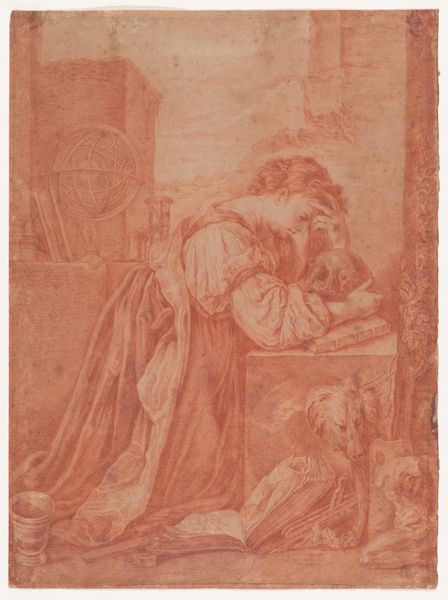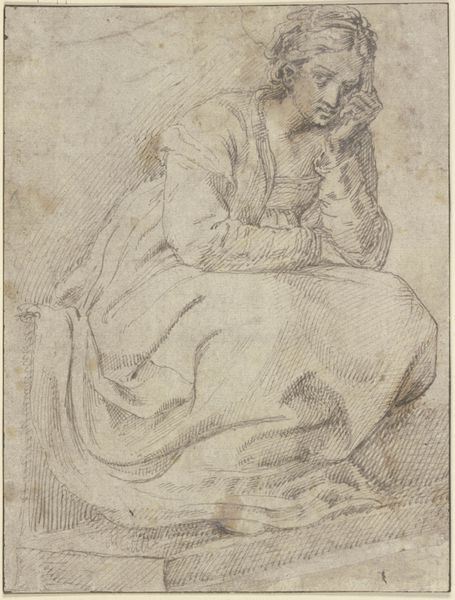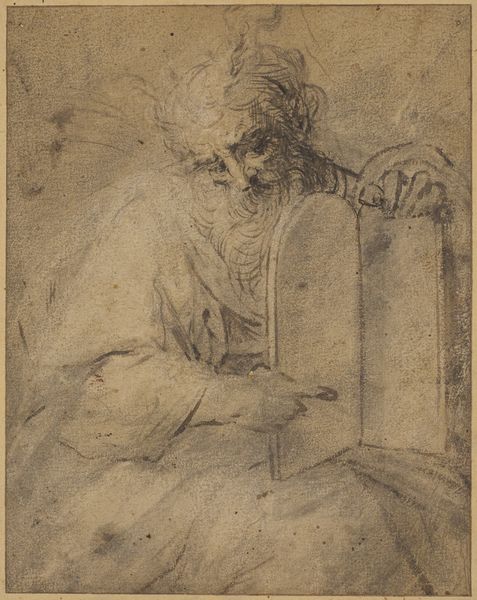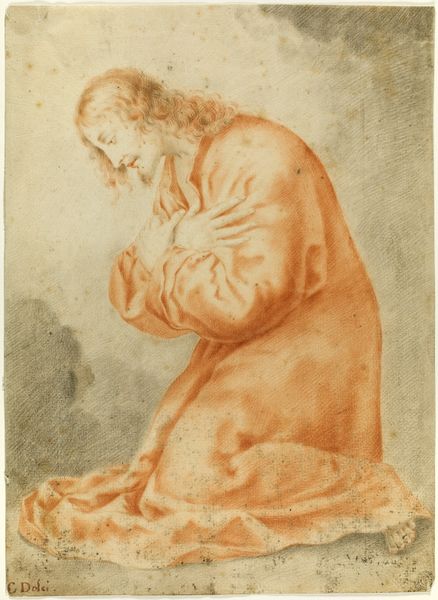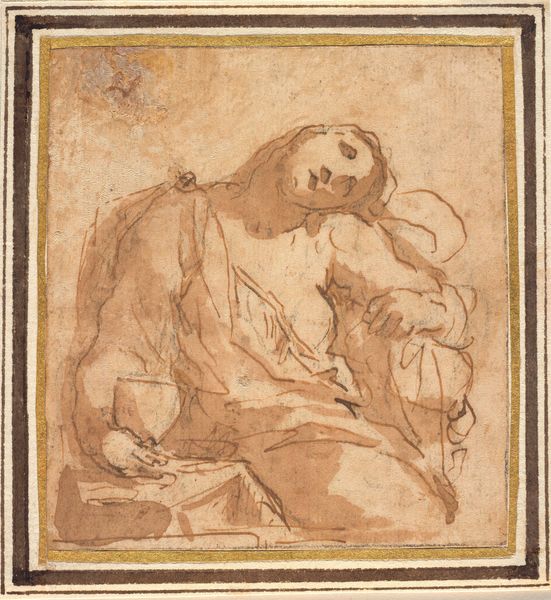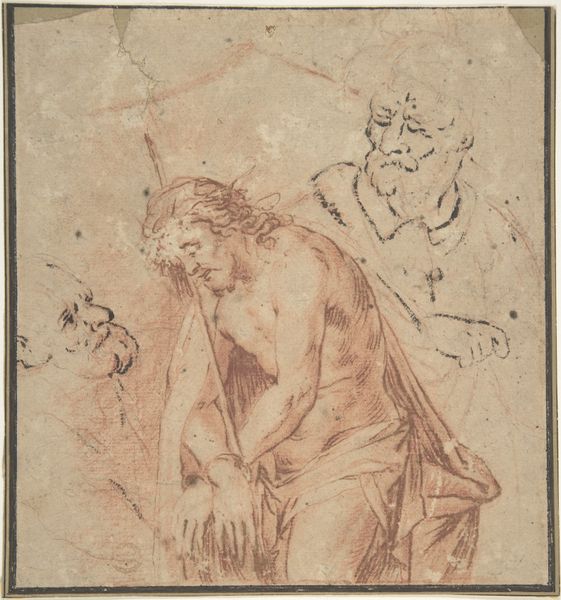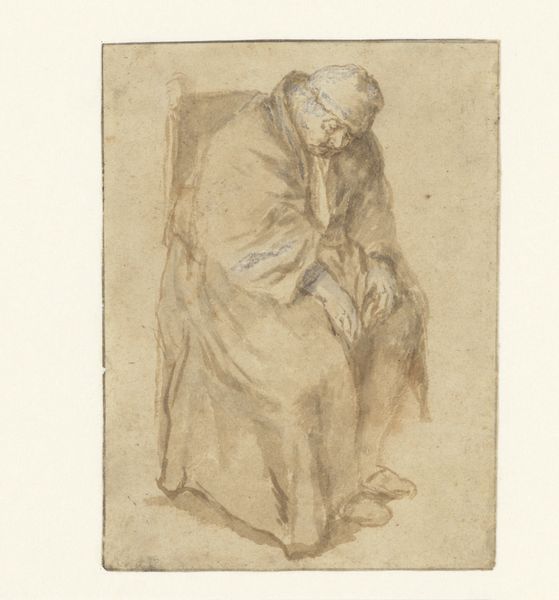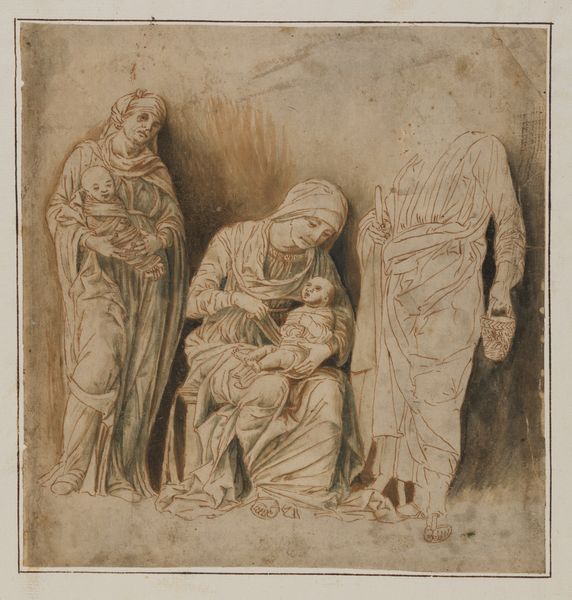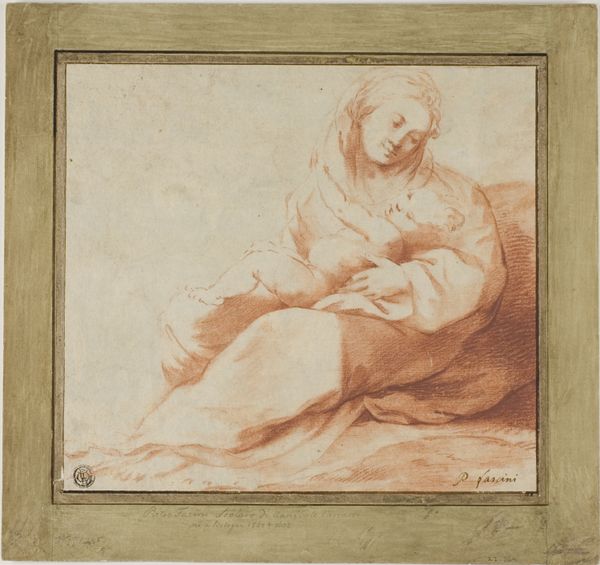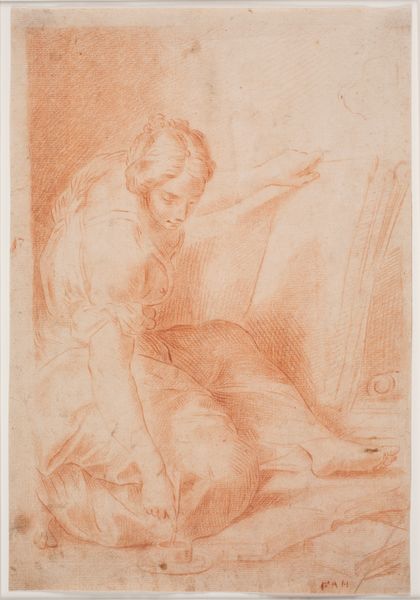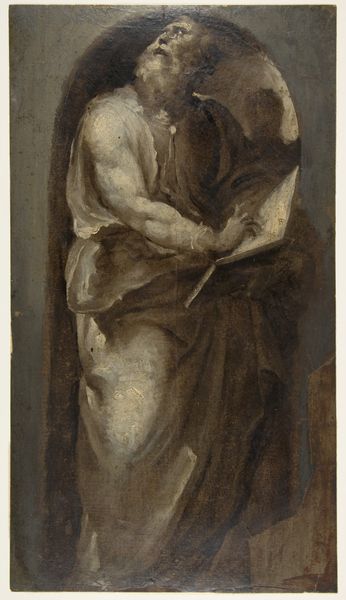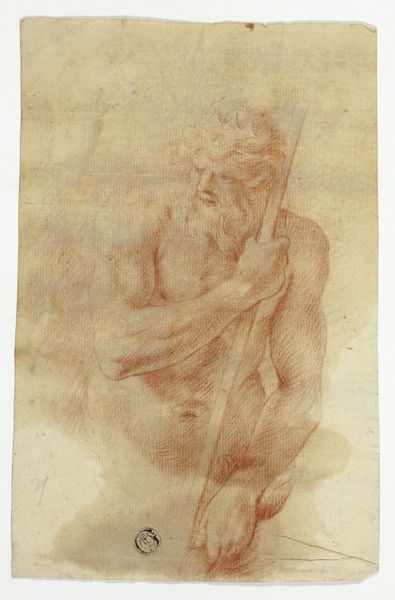
drawing, print, paper, ink, pencil, chalk, pen, charcoal
#
portrait
#
drawing
# print
#
charcoal drawing
#
figuration
#
paper
#
11_renaissance
#
ink
#
pencil
#
chalk
#
chiaroscuro
#
water
#
pen
#
genre-painting
#
charcoal
#
history-painting
#
academic-art
#
italian-renaissance
Dimensions: 238 × 210 mm
Copyright: Public Domain
Curator: Standing before us is "Saint Jerome," a drawing created around 1595 by Agostino Carracci, housed right here at the Art Institute of Chicago. Editor: Gosh, the emotion just pours off this. It's this feeling of deep, soulful weariness, isn’t it? The man looks completely consumed by thought. Curator: Yes, that pensiveness is beautifully conveyed through Carracci's mastery of chiaroscuro. Notice how the dramatic contrasts of light and shadow model Saint Jerome's features, highlighting his brow, the curve of his beard, lending form and depth. Editor: It feels incredibly intimate. Like we're intruding on a very private moment. I love how the red chalk gives a warmth to the figure, makes it less austere and more human. And that cross clutched in his hand—the artist uses it brilliantly to show not just devotion but a kind of grasping for meaning. Curator: Precisely. The composition is a masterful study in form; the cross leads our eye to the rosary beads. Also, note the skull: such symbolism adds layers to our interpretation. These aren’t merely props, are they? Editor: Not at all. They become elements of our emotional language; the skull—inevitably a memento mori—speaks volumes, adding this reflective quality; it really makes you feel mortality weighing down on the saint, that struggle between earthly life and faith. Curator: Indeed. Beyond its thematic depth, Carracci’s "Saint Jerome" is a testament to the artist’s skill in rendering textures and depth on a single sheet of paper using red chalk. The softness and fluidity create a visually stunning effect. It speaks to both his profound faith and human existence. Editor: Definitely an artwork to sit with for a good while. There's so much to feel and to reflect on here. Curator: I couldn't agree more. It's a dialogue between art, faith, and our own searching selves.
Comments
No comments
Be the first to comment and join the conversation on the ultimate creative platform.
